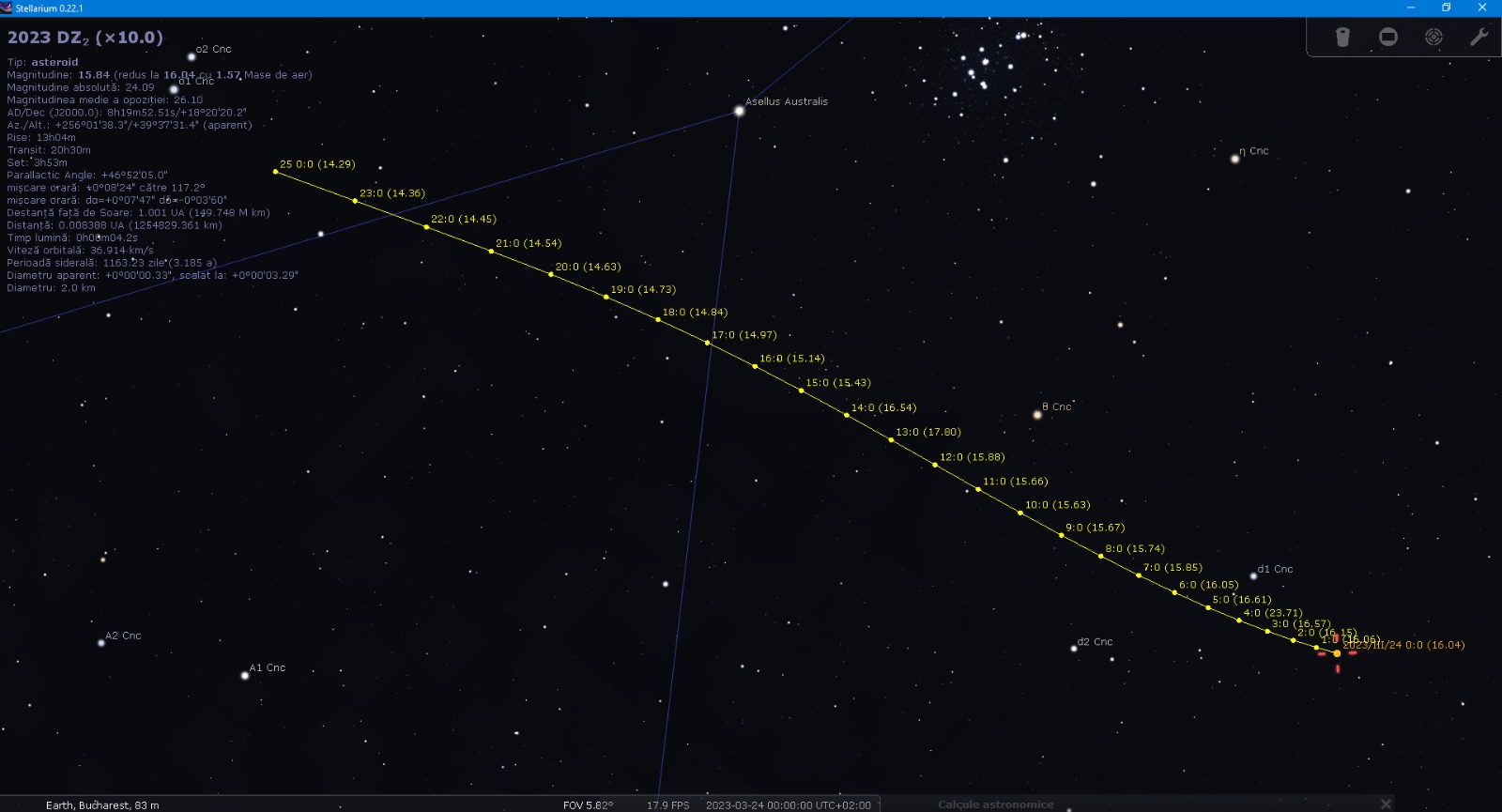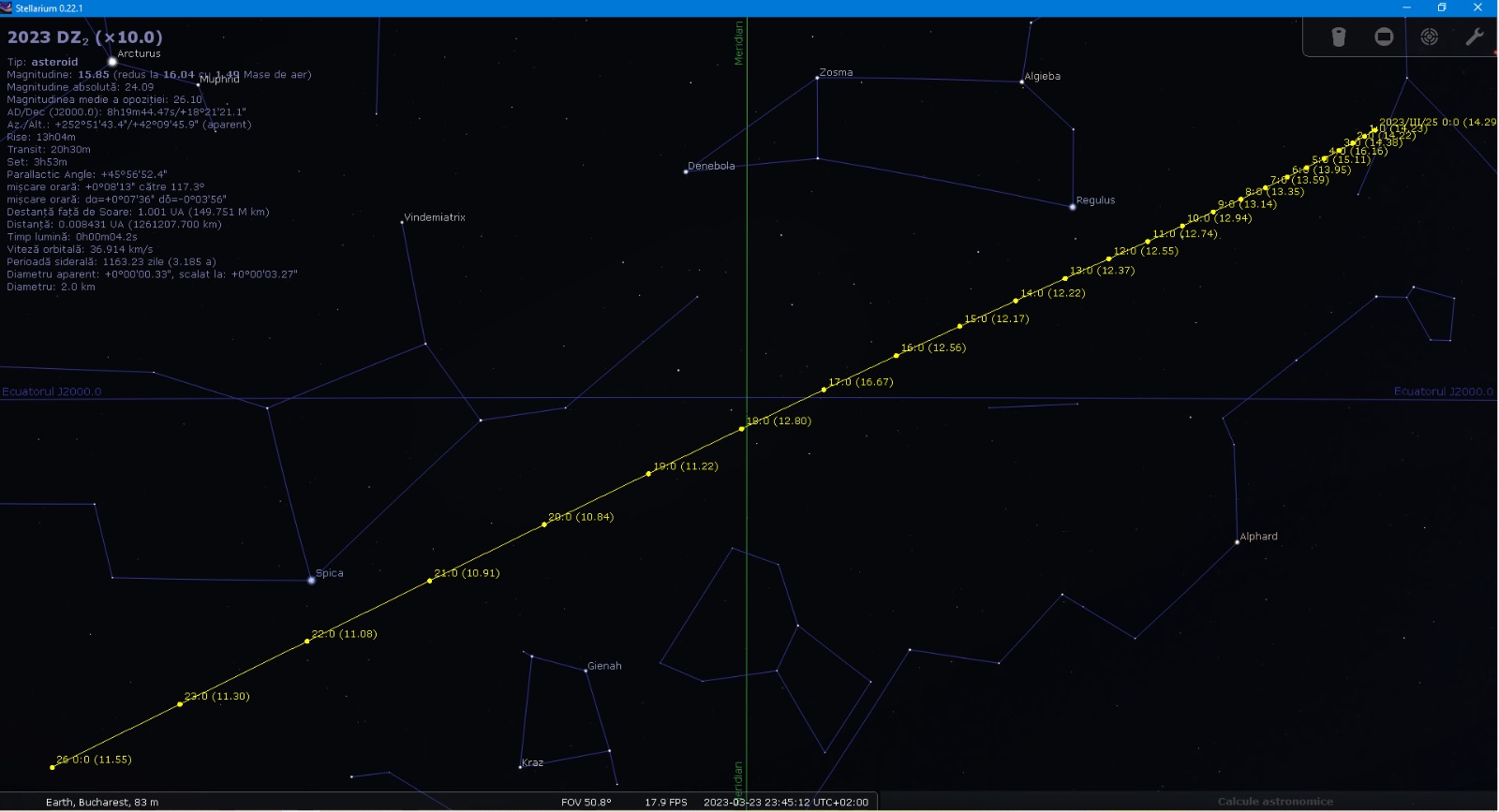18 march 2023 22:30
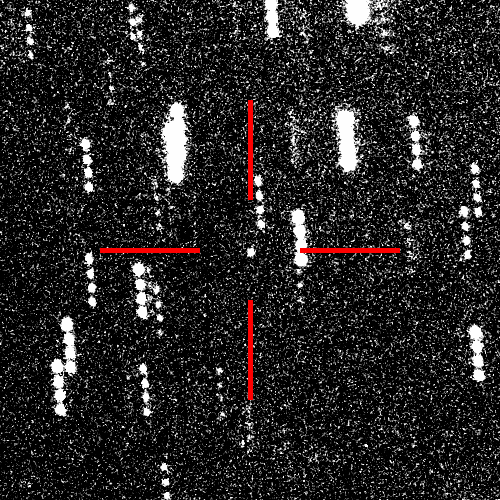
A group of romanian astronomers have discovered an asteroid which will pass at 170 000 km far from Earth ( about half of Earth-Moon distance ) in 25 March 2023. The observations which generated this result were part of the research activities from ParaSOL project (a project which aim to detect Solar Sistem objects and space debris using parallel computation methods ). They were obtained using the 2.5m Isaac Newton (INT) from La Palma (Canary Islands, Spain).
The asteroid has received the temporary name 2023 DZ2 (https://minorplanetcenter.net/mpec/K23/K23F12.html), after the fast report of observations sent to Minor Planet Center ( which keeps a database with all objects in the Solar System). The preliminary results shown the asteroid has a diameter between 40 and 100 m. Because of the small dimension of 2023 DZ2 its brightnes is very low and its detection was possible only using a big aperture telescope and powerful detection algorithms. But for a short time in the next days the object will pass close to Earth temporarily reaching a 9.5 V magnitude which will make it visible event in amateur astronomer telescopes.
The object was discovered on 28 February 2023, thanks to the real-time processing using the software tools and infrastructure of the ParaSOL project (https://planet.astro.ro/ParaSOL/). The detection was made during the validation activities for the Synthetic Tracking on Umbrella (STU), a software module developed in the mentioned project. This software uses parallel computation methods applied on hardware accelerators as the powerful graphic processors can help improve the signal-to-noise ratio of the moving sources which were imaged in astronomical observations. This validation activity was made using the Isaac Newton Telescope from Roque de Los Muchachos (operated by the Institute of Astrophysics from Canary Islands belonging to Isaac Newton Group) during 27 February — 1 March period.
Those observations were processed on the fly using the ParaSOL software package and the results were compared with similar those from commercial software packages. Prof. Costin Boldea, a collaborator of the Parasol project was runing a paralel scan of the fields using the Tycho Tracker software and noticed firstly a moving light source which seemed, after some preliminary checks, to be an unknown near Earth asteroid. After some detailed checks it was confirmed that the object is indeed a new near Earth asteroid.
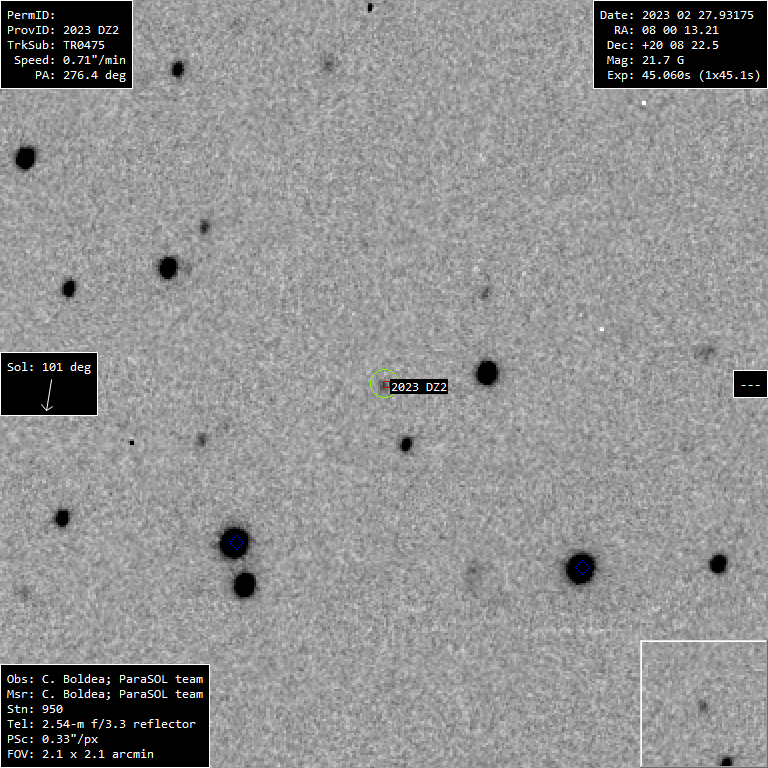
The measurements extracted from the images of the three successive observing nights allowed the determination of the 2023 DZ2 preliminary orbit and some object size estimations. All these data were sent to Minor Planet Center, which on 16 March has announced the new name of the object and its preliminary orbit. Using numerical integration methods, the evolution of the object was followed and the impact risk estimated. All those data have attracted the attention of the entire international astronomers community mostly because the potential of close approaches with Earth and also because of the non zero impact probability in the future due to the analysis made by the Sentry system ( developed by the CNEOS group in the NASA JPL laboratory) but also by other similar systems. After the discovery and MPC announcements different astronomical observatories have measured the object night by night in order to help refining the orbit and have a more precise evaluation of the risk. Due to this refining activities the object risk has constantly decreased until finally around 20 of March any Earth impact probability in the future was declined.
The ParaSOL project is developed within a collaboration between the Astronomical Institute of the Romanian Academy and the University of Craiova using a grant from the Romanian National Authority for Scientific Research and Innovation (UEFISCDI, project PN-III-P2-2.1-PED-2021-3625). The project uses the newest computer science and mathematics models to develop efficient search algorithms which automatically identifies asteroids, comets and other space objects. The project team contains Romanian astronomers and software developers : Phd. Ovidiu Văduvescu, Mălin Stănescu, Phd. Marian Predatu, Lucian Curelaru, prof. Daniel Berteșteanu și Phd. Marcel Popescu (the project manager). This is made in framework of the EURONEAR network (http://www.euronear.org/). We also have a strong collaboration with other specialists involved in this validation and discovery : Prof. Costin Boldea (which firstly noted the object), Phd. Carlos de la Fuente Marcos and Phd. Raul de la Fuente Marcos, and also the ING students Freya Barwell and Kiran Jhass.
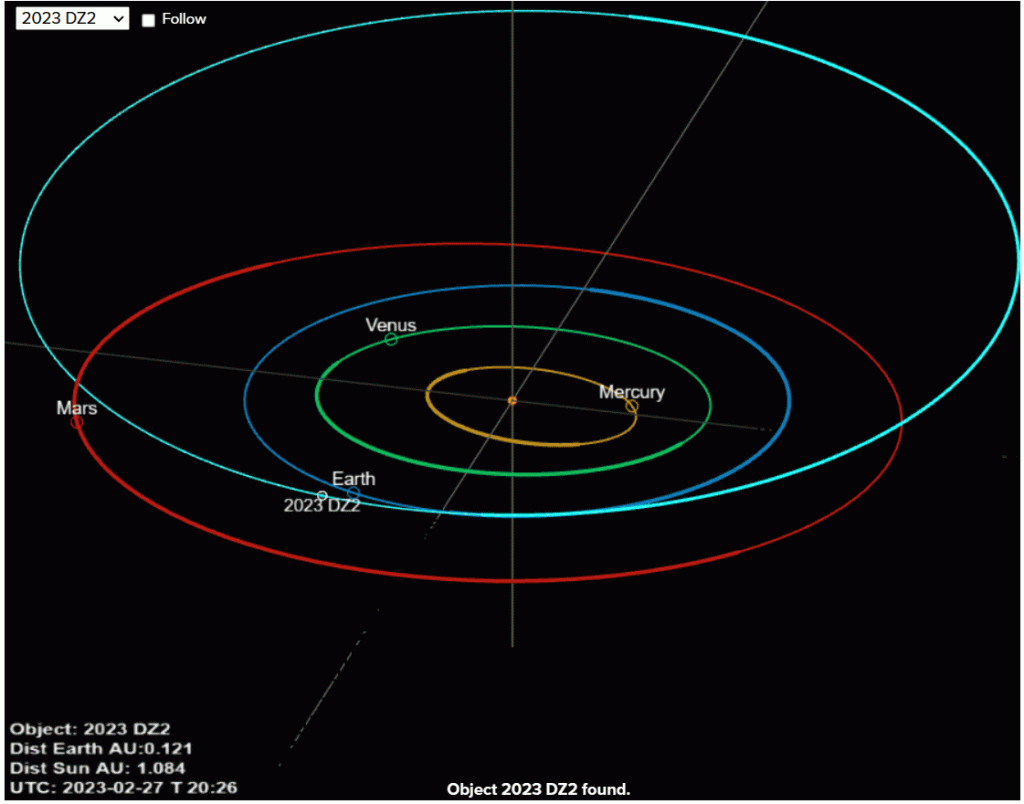
Besides the very limited infrastructure and resources the planetary science group from the Astronomical Institute of the Romanian Academy , led by Phd. Marcel Popescu is implied in top research activities in the field, the results being published by the most prestigious magazines in the area of Solar System objects reasearch. Those activities includes software automation solutions for detection and analysis of Solar System objects, participation in big international observation programs, contribution to research space missions. The main ideas of the ParaSOL project which led to the discovery of the 2023 DZ2 asteroid, occured as a collaboration between professional astronomers, students and amateur astronomers from Astroclubul București.
- EURONEAR / NEA discovered: http://www.euronear.org/discoveries.php
- Wikipedia 2023 DZ2: https://en.wikipedia.org/wiki/2023_DZ2
- MPEC publication of discovery: https://minorplanetcenter.net/mpec/K23/K23F12.html
- Orbital elements and observations 2023 DZ2 MPC DB: https://minorplanetcenter.net/db_search/show_object?utf8=%E2%9C%93&object_id=2023+DZ2
